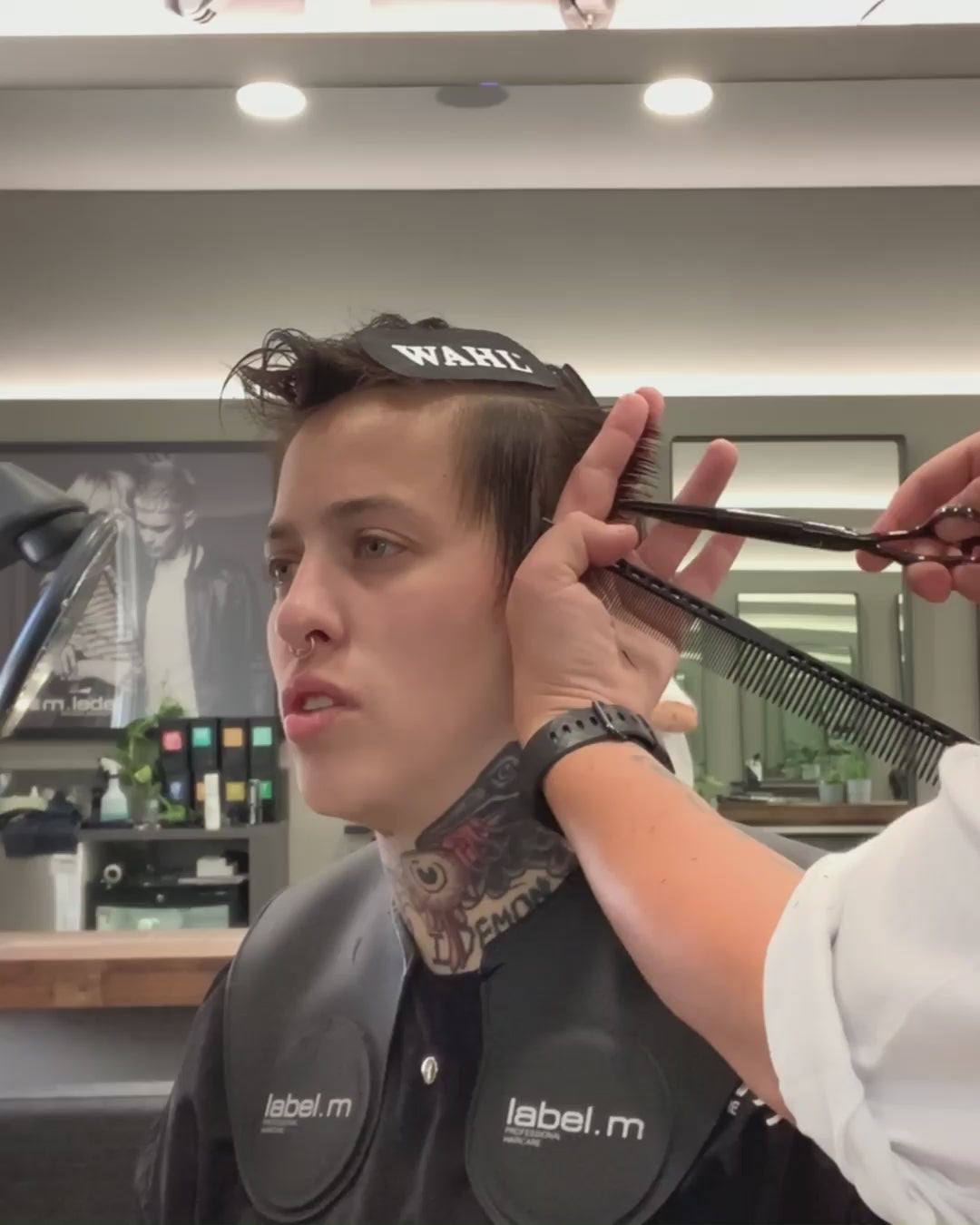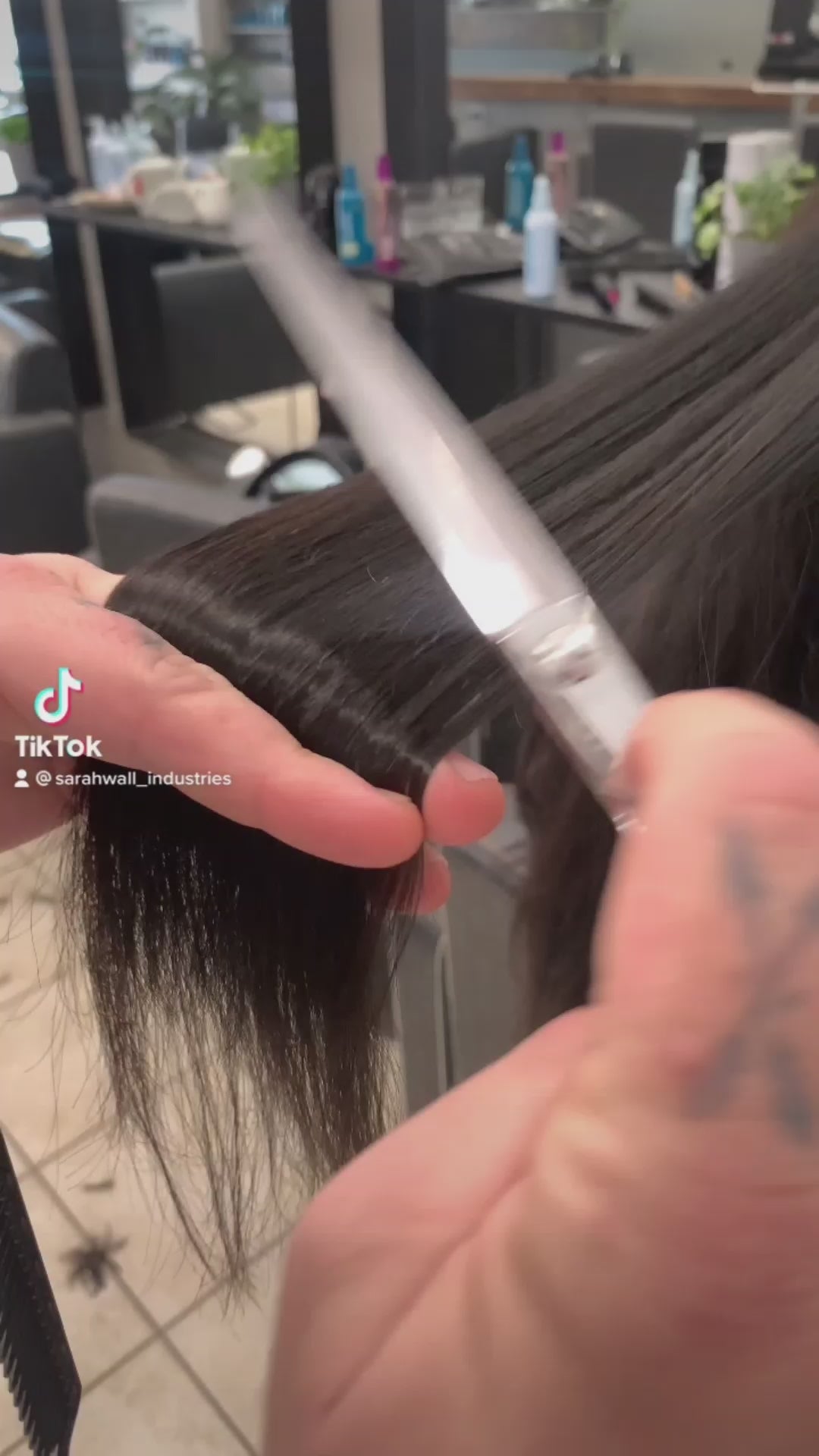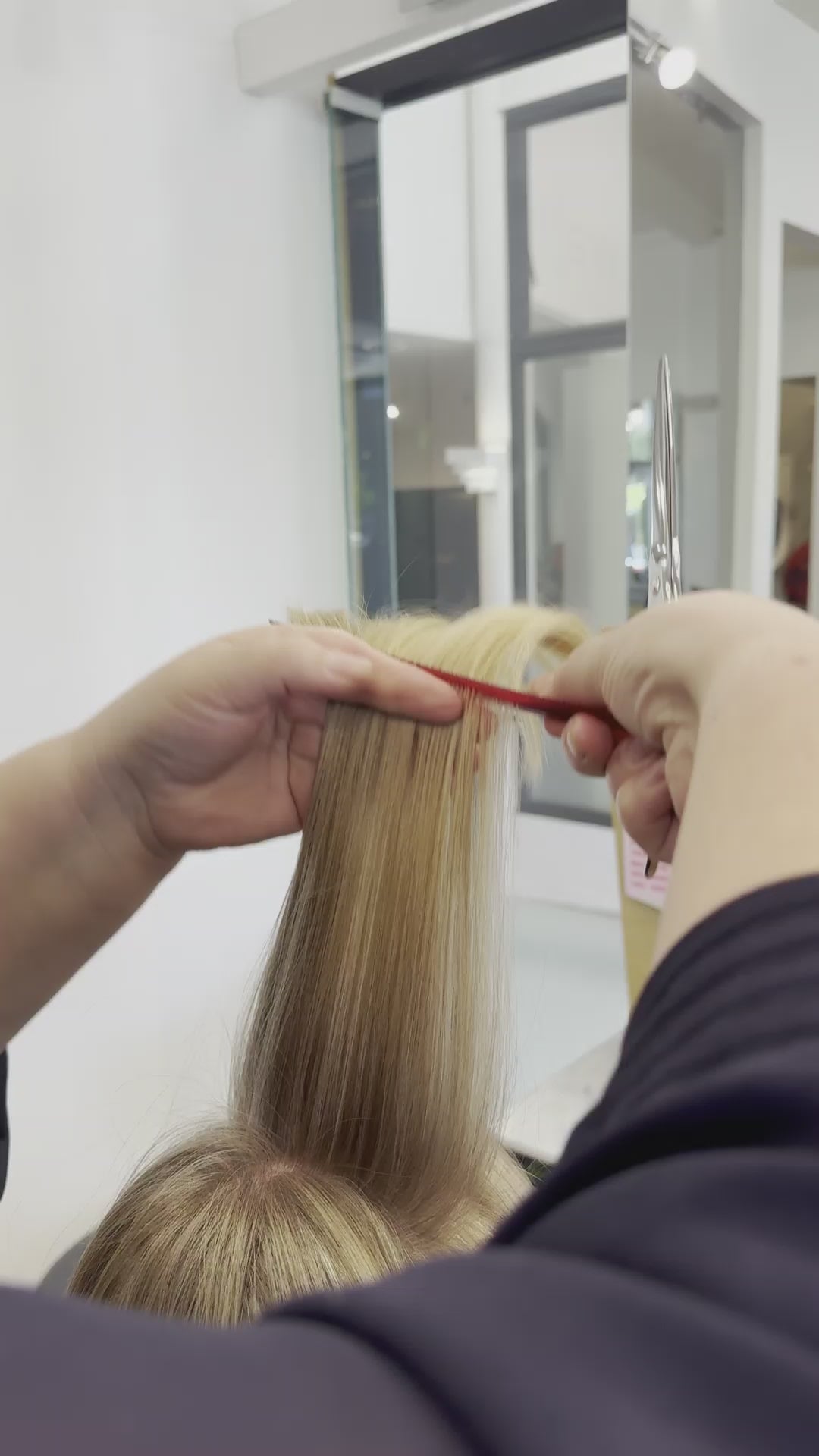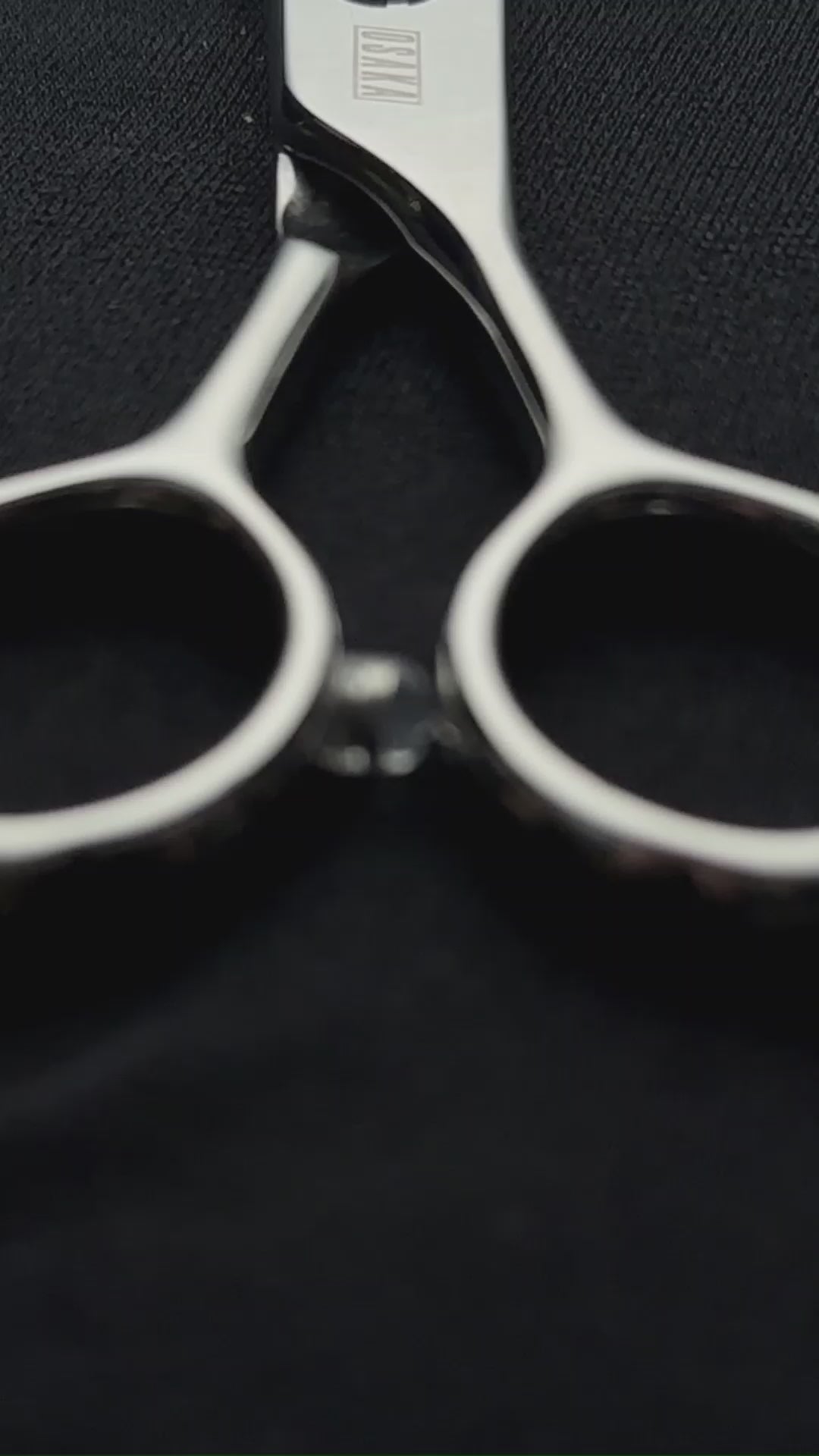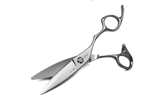10 Common Hair Shear Maintenance Mistakes to Avoid
Remember when your scissors glided through hair like butter? That sharp, effortless precision seems like ages ago. Now you're dealing with snags and ragged cuts, wondering what happened. Here's the truth: even top-tier Japanese steel degrades fast under poor care. Mastering maintenance protects more than your wallet—it safeguards your reputation and every client's experience.
Your "Clean" Scissors Are Corroding From the Inside Out
The Hidden Corrosion Culprits
The cleaning products under your sink might be slowly destroying your scissors. Research on surgical-grade stainless steel reveals that whilst 416 stainless steel isn't susceptible to uniform corrosion, it absolutely undergoes localised corrosion when exposed to harsh chemicals.
Tap water, especially hard water, creates the perfect storm for corrosion. When combined with household cleaners or generic disinfectants, the protective passive film on your blades begins to break down. Microscopic pitting starts occurring along the cutting edge, causing those frustrating snags during cutting.
What to Use Instead
Using suitable cleaning products offers genuine protection against localised corrosion. Opt for pH-neutral solutions designed for professional shears. Always rinse with distilled water and apply scissor-specific oil to protect the passive film.
Most Stylists Skip the One Habit That Prevents Premature Blade Death
Think about what builds up on your blades throughout the day—bits of hair, styling products, oils from your hands. All of it sits there, quietly eating away at the metal. The solution's almost too simple: wipe them down every few cuts and add a tiny drop of oil. Takes thirty seconds, maybe less. Yet this habit alone can add years to your scissors' life.
The Hair Shear Maintenance Ritual Professionals Refuse to DIY
Why Home Methods Destroy Blade Integrity
Professional scissors are precisely engineered. The cutting edge forms at a specific angle between zero and fifteen degrees. Hair scissors need that aggressive angle for razor-sharp precision, but it's exactly what makes DIY sharpening risky for your blades.
Home sharpening? You'll struggle to hold that precise angle every single time. The process creates a burr—filed metal accumulation along the inner surface. Leave that burr unaddressed, and you'll wreck the blade faster than neglect ever could.
When to Seek Professional Sharpening Services
Sharp scissors cut cleanly. Yours pushing hair instead? Time for professional sharpening after six months. OSAKA's expert sharpening service ensures your scissors return to peak performance without DIY risks.
The Gravity Test That Separates Salon-Grade Tools From Expensive Paperweights
Hold scissors by one handle with blades hanging vertically. Open to forty-five degrees and release. Properly tensioned scissors should close smoothly, stopping about halfway. Incorrect tension causes problems—loose scissors fail to cut cleanly whilst overly tight scissors create excessive friction and hand strain.
Your Scissor Pouch Is Either Protecting Your Investment or Destroying It
Leather pouches can trap moisture in humid conditions. Fabric cases without blade separators allow scissors to knock against each other, creating micro-damage. Choose cases with individual slots and adequate ventilation. Your storage solution should be an active part of your hair shear maintenance strategy.
Water Doesn't Evaporate Fast Enough to Save Your Blades
Here's the thing: stainless steel resists rust but isn't invincible. Water left sitting on your blades attacks that protective layer surprisingly fast. After cleaning, grab a cloth and dry everything thoroughly—especially around the pivot point. Then add a light coat of oil. This makes for a crucial step for those situated in coastal salons with high humidity.
Falls Don't Always Break Your Shears—They Just Make Them Cut Like Cheap Ones
Dropping scissors often creates microscopic misalignment or loosens the pivot point enough to affect precision. You'll notice hair pushing, uneven cuts, and increased hand fatigue. Never assume dropped scissors are fine because they look undamaged. Have them professionally inspected after any significant impact.
If Human Hair Fractures Steel, What Is Office Paper Doing to Your Edges?
Recent research revealed something remarkable: human hair, despite being fifty times softer than razor blades, causes steel to fracture through microstructural heterogeneity and microscopic chips along the cutting edge. When hair contacts blades at specific angles, it creates mixed-mode cracking that dulls edges faster than simple wear. If something as soft as hair damages precision steel, imagine what paper, fabric, or plastic does.
How Paper, Fabric, and Plastic Void Your Warranty
Most premium manufacturers explicitly state that warranties don't cover damage from cutting non-hair materials. These materials fundamentally alter blade geometry in ways standard sharpening can't repair. Opening packages or cutting fabric might seem harmless, but each action permanently compromises cutting performance. Keep dedicated household scissors for these tasks.
Disinfection Works—Until It Eats Through Your Passive Film Layer
Keeping tools sanitized protects clients from infection—that's non-negotiable. However, South Australian Public Health Standards emphasize something crucial: disinfect equipment properly without destroying your scissors in the process. Soaking scissors in disinfectant creates prolonged chemical exposure that breaks down the passive film protecting stainless steel blades.
The Right Way to Sanitise Between Clients
Spray disinfectant on a cloth, wipe your blades clean, then dry them right away and apply oil immediately. This achieves proper sanitisation whilst minimising chemical exposure time.
Delaying Service Doesn't Save Money (It Transfers It to Your Replacement Budget)
Professional sharpening costs a fraction of what you paid for quality scissors. Yet many stylists postpone service, managing with duller blades. This compounds the problem exponentially. Dull scissors require more pressure, accelerating wear. Your cutting speed decreases, and cut quality suffers, affecting client satisfaction. Routine care protects your investment. OSAKA's sharpening service brings back that factory-fresh precision your work depends on daily.
OSAKA has spent three decades working alongside stylists who know great tools make great work possible. We craft scissors from premium Japanese steel with handles designed to keep your hands comfortable all day. Browse our collections to discover your ideal pair, check out accessories that safeguard your investment, or schedule our sharpening service. Your skills deserve equipment that rises to meet them.





